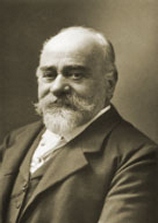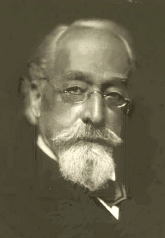|
|


It was in this environment that modern advocates of hydrotherapy established the scientific basis of treatment by water and advocated its institutional use. |
Wilhelm Winternitz 1834-1917 |
Of these advocates, Wilhelm Winternitz of Vienna was probably the man most responsible for giving hydrotherapy its physiological basis, hence paving the way for institutional psychiatric use of hydrotherapy. Winternitz wrote his dissertation on Priessnitz's wasserkur as a medical student - in his research measuring the pulse rate of Priessnitz's patients and performing other physiological test of the efficacy of water-cure. Later he established a hydrotherapy clinic while on the faculty of the University of Vienna and opened his own water cure resort at Kaltenlautgeben, a short distance from Vienna. |
A contemporary of Winternitz and admirer of his work, Simon Baruch was the most influential and tireless advocate of hydrotherapy in the United States. After presenting, in 1889, a paper at the New York Academy of Medicine entitled "A Plea for the Practical Utilization of Hydrotherapy," Baruch equipped and opened a hydrotherapy unit at Montefiore Hospital. At first he treated a variety of chronic conditions, particularly tuberculosis, with limited success. Over time Baruch began to accept neurasthenic patients referred to him by S. Wier Mitchell and others and met with more success treating psychosomatic complaints. Attempting to refine his use of hydrotherapy, Baruch worked with plumbing fixture manufacturers to design and produce the equipment needed for hydrotherapeutic treatment. He designed and equipped the hydrotherapy suite at the new Bloomingdale Hospital in White Plains, which opened in 1894. |
Simon Baruch 1840-1921 |